This ‘n’ that
Moomins, and the meanings of our lives
21 December 2012 | This 'n' that
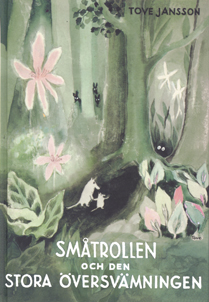
The first ever Moomin story, 1945
Tove Jansson’s Moomin books are widely cherished by children and adults alike. They are funny and charming yet haunting and profound. Lovable Moomintroll; practical and sensible Moominmama; spiky Little My; the terrifying yet complex monster, Groke – Jansson’s creations linger in the mind.
The first ever Moomin book – The Moomins and the Great Flood (Småtrollen och den stora översvämningen, 1945) – was published in the UK in October by Sort Of Books, but Jansson’s writing for adults is also achieving recognition in the English-speaking world.
A Winter Book, a selection of 20 stories by Jansson (Sort Of Books, 2006) was the trigger for a recent event on London’s South Bank. Along with journalist Suzi Feay and writer Philip Ardagh, I was invited to talk about Jansson’s work in general and about these stories in particular.
As Ali Smith notes in her fine introduction to the collection, the texts are ‘beautifully crafted and deceptively simple-seeming’. They are, as she puts it ‘like pieces of scattered light’. She also refers to the stories’ ‘suppleness’ and ‘childlike wilfulness’.
‘The Dark’, for example, offers an apparently random set of snapshots of childhood. Arresting images abound – swaying lamps over an ice rink, swirls in the pattern of a carpet that turn into terrible snakes – to create a tapestry of childhood. It’s like a dream: of ice and fire, fear and safety, a mixture that recalls the secure yet scary world of Moomin valley.
‘Snow’, too, conjures childhood fear. The house that features in this story is unhomely or uncanny, to refer to Freud, and seems haunted by the ghosts of other families. The story ends with the shared resolution between mother and child to return to a place of safety: ‘So we went home.’
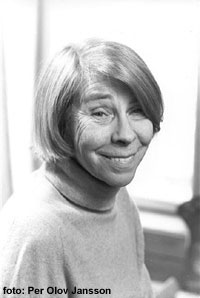
Tove Jansson (1914–2001)
The combination of scariness and safety, of comfort and unease, is one of the things that makes Jansson (1914–2001) such a powerful writer, not only for children – although questions of security and fear might have especial resonance in early life – but also for adults, who continue to be haunted by the unknown, but also tempted by it.
The South Bank event also gave participants and audience the chance to talk about other works by Jansson. The Summer Book (Sommarboken, 1972) notably, is a delicate and deft evocation of a summer spent on an island.
The narrative charts the relationship between a grandmother and granddaughter, and at the same time probes such profoundly human questions as love and loss, hope and change and continuity. As always in Jansson, the descriptions are sharp and crisp, and the writing is at once spare and suggestive.
Novels like Fair Play (Rent spel, 1989) and The True Deceiver (Den ärliga bedragaren, 1982) reveal Jansson’s subversive, sly, and subtle sides, which sit alongside her playfulness, warmth, and humour to create a unique aesthetic. Fair Play is a book about the relationship between two women; it’s tender, funny and thoughtful. Never sentimental, it is nonetheless moving. And it’s quietly subversive in its matter-of-fact depiction of a same-sex relationship.
The True Deceiver is set in a snowbound hamlet. A young woman fakes a break-in at the house of an elderly artist, a children’s book illustrator, and a strange dynamic develops between the two women. It’s a book about being outside, about not belonging. The relationship between the women, which is never fully resolved or explained, is especially fascinating.
Jansson excels at showing the human need for both company and privacy, intimacy and autonomy. And her work is profoundly philosophical. In very light, nimble narratives, Jansson explores the meanings of our lives.
Coming up…
14 December 2012 | This 'n' that
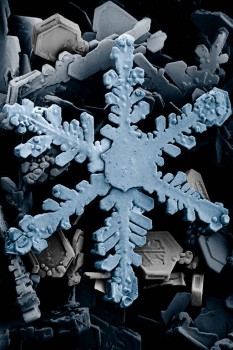
Natural art: hexaconal dendrite snowflake, magnified by an electron microscope and coloured. Photo: Beltsville Agricultural Research Unit, U.S. Dept. of Agriculture / Wikimedia Commons
Stop press: in a change to our advertised schedule, columnist Jyrki Lehtola reports on last week’s Finnish Independence Day shindig.
So our new Letter from the Editors, with appropriately festive themes, will appear next week.
Coming in from the cold
13 December 2012 | This 'n' that
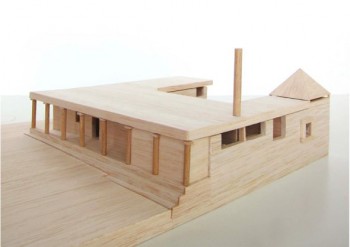
Kulttuurisauna in Helsinki: design by Tuomas Toivonen and Nene Tsuboi
Kulttuurisauna, ‘The culture sauna’, will soon be opened in Helsinki as a part of the World Design Capital 2012 programme. The idea was developed into a project by architect Tuomas Toivonen and designer Nene Tsuboi, a Finnish-Japanese couple who will also run the sauna.
‘When we started considering the idea of building a public sauna in Helsinki, I realised that my dream job is to run a public sauna – offering people a place for cleansing, bathing and sharing quiet togetherness. We have been working in the field of design and architecture for 10 years now, and felt that we can use all of our skills in this project, developing a new public sauna in Helsinki; as a building, as a service and as an environment. By doing this, we want to contribute to the city, participating in making Helsinki more interesting and enjoyable’, says Tsuboi. More…
How cool is Stinky?
30 November 2012 | This 'n' that
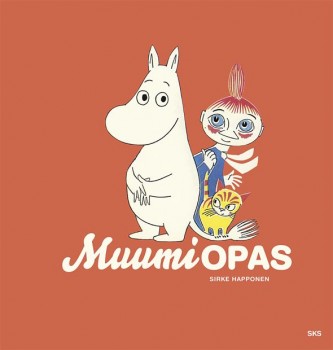
Moomintroll and Mymble: positive role models
‘What reigns in Moomin Valley is a rock-hard hierarchy of those who are cool (Snufkin, Moominmamma, Little My), those who need to be those who are cool (Moomintroll, the Snork Maiden, Sniff, one or two Whompers and Toffles), and those who are absurd (the Hemulen, the Fillyjonk, the Muskrat)’, noted Pia Ingström in her review (Books from Finland 2/2008) of Sirke Happonen’s dissertation on Tove Jansson’s characters.
Snufkin? Fillyjonk? The Moomin world, created by the versatile Finland-Swedish writer and artist Tove Jansson (1914–2001), is peopled with funny-shaped Moomins and a great variety of other creatures who may look a bit odd at first but who are very… human. Jansson’s books have been translated into more than 40 languages. More…
Literary glory and basketball
23 November 2012 | This 'n' that
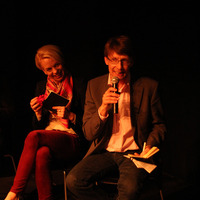
Fights with words: Baba Lybeck and Markus Nummi. Photo: Literary Death Match
Fans of new writing and competitive reading out loud converged on Korjaamo in Helsinki on October 25th for the second Finnish ‘episode’ of Literary Death Match. LDM (as it’s known to regulars) is a series of events created in the USA and hosted by Adrian Todd Zuniga in which authors perform live readings of their recent work and receive critical assessments from a panel of judges in a manner familiar to viewers of trashy TV talent shows.
The winners of the evening’s initial reading rounds advance to the final, where the ultimate victor is decided in a game show-style battle involving skills that are perhaps more tangential to the work of most authors.
In his shiny jacket, LDM co-founder Adrian Todd Zuniga certainly looked the part of the cheesy game show host. He was an enthusiastic compère and got the bilingual evening under way by introducing the panel of judges. Author Markus Nummi was to be responsible for assessing the competitors on literary merit, while Baba Lybeck, a radio journalist and host of Uutisvuoto (the Finnish TV version of the BBC’s topical panel show Have I Got News for You), would be awarding points for performance. The third member of the panel was journalist and author Ari Lahdenmäki, who was assigned the category of ‘Intangibles’, i.e. anything that didn’t fall under the other two headings. More…
Renaissance man
19 November 2012 | This 'n' that
 The graphic designer Professor Erik Bruun has been awarded the Helsinki Design Award, created to celebrate World Design Capital Helsinki 2012.
The graphic designer Professor Erik Bruun has been awarded the Helsinki Design Award, created to celebrate World Design Capital Helsinki 2012.
Worth 10,000 euros, this special one-off award is intended to highlight the remarkable work of Erik Bruun (born 1926). His internationally recognised life’s work – from the 1950s onwards – includes commercial posters, book and journal design, logotypes, postage stamps and bank notes, photography and nature posters. Recently his best designs of the 1950s have been experiencing a renaissance as, for example, printed material and posters.
Finnish nature, its flora and fauna, in particular endangered species, have been close to his heart, and his Saimaa ringed seal poster became the emblem of the Finnish Association for Nature Conservation.
Erik worked with us at Books from Finland as Art Editor from 1976 to 1990. He has lived for decades in an old wooden house on the UNESCO World Heritage Site islands of Suomenlinna (Sveaborg) in Helsinki harbour, and his observations of his winged friends, various sea birds, were often the subject of discussion over Books from Finland layouts.
The logo he created for Books in 1978, a quill with an eagle’s eye, featured on the covers of almost 50 issues of the journal; the illustration here, with the text Images from Finland, is from a catalogue introducing graphics and poems from a portfolio published by Eurographica in 1978.
Our editorial process went digital in the early 1990s – but Erik still works with his quills and pens, not with computers.
Congratulations!
Stories in stone
9 November 2012 | This 'n' that
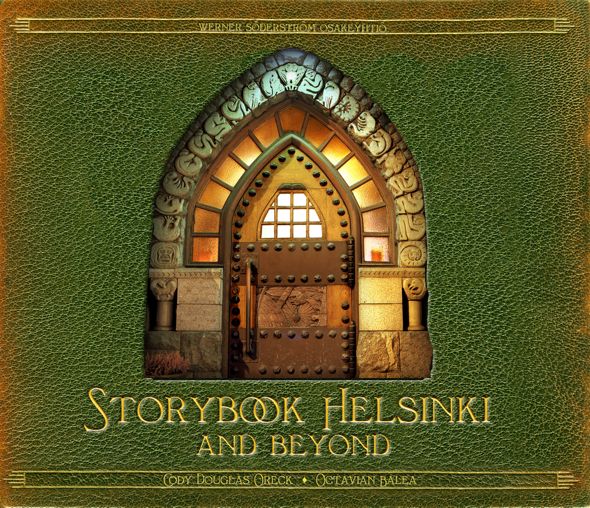 Birds and bees, frogs, squirrels, water lilies, thistles, ferns, junipers, bears and even gnomes originating in Finnish nature appear, in abundance, in Finnish architecture of the two decades around the turn of the 20th century.
Birds and bees, frogs, squirrels, water lilies, thistles, ferns, junipers, bears and even gnomes originating in Finnish nature appear, in abundance, in Finnish architecture of the two decades around the turn of the 20th century.
The trend that developed out of the Arts and Crafts Movement in Great Britain and in the United States, known as l’art nouveau in France and Jugendstil in Germany, lived a short but extremely fervent life in Finland, which adopted the term jugend.
In Finland this aesthetic movement is also called national romanticism. In 1899 the pan-Slavic movement arising in Russia took the form of attempts to suppress Finland’s burgeoning national identity in Finland, and in resisting this, artists made extensive use of national romantic material in their work. More…
It’s a long way to Cameroon
18 October 2012 | This 'n' that
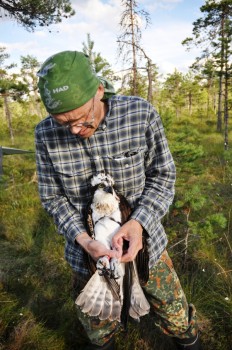
Before takeoff: Ilmari looks slightly annoyed here, as his ankle rings are checked by Harri Koskinen before his release. Photo: Juhani Koivu
An eight-year-old Finnish male, named Ilmari, has emigrated to Africa; on 13 October he was spotted in Cameroon. He set off for the journey on 16 September.
At the beginning of his journey, in Hattula, southern Finland, in August, he weighed 1,370g.
Ilmari is an osprey. The Osprey Foundation (more photos here too) fitted him with a Microwave GPS-Argos satellite transmitter (weighing just 30g and running on solar power). This allows osprey researchers to follow his journeys.
Actually Ilmari hasn’t emigrated – he will return to where he was born, in March 2013. As this is Ilmari’s first recorded migration, his final destination is not known. But one of his countrymen (-birds), carrying a transmitter, Jukka, liked it so much in Cameroon that he spent the winter there. Will Ilmari do the same? Watch this space!
The journeys of Finnish migrating birds are long (in this case, more than 6000 kilometres) and dangerous, so we wish Ilmari safe travel back home as well.
Older and wiser?
9 October 2012 | This 'n' that
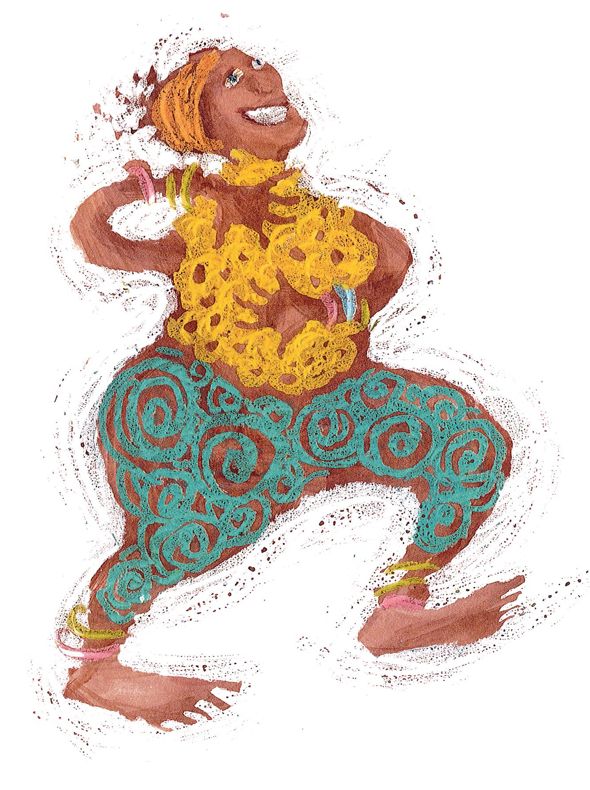
Illustration: Virpi Talvitie (from Täyttä päätä. Runoja ikääntyville, ‘Full steam ahead. Poems for ageing people’, edited by Tuula Korolainen and Riitta Tulusto)
Nobody can claim that old age is hot, or media-sexy. Yes, but what are older people really like? Are they the bingo-obsessed grannies in floral frocks or old geezers living in the past of popular opinion?
No longer. In just a few years the baby-boom generation will be entering their seventies, when ‘old age’, in its current Western definition, begins. (Until then, senior citizens are allowed to remain ‘adults’.)
Are the old people’s homes ready for them? This new elderly generation will be wanting to listen to Elvis, the Rolling Stones and the Beatles rather than the tango. More…
Outsider art protected
31 August 2012 | This 'n' that
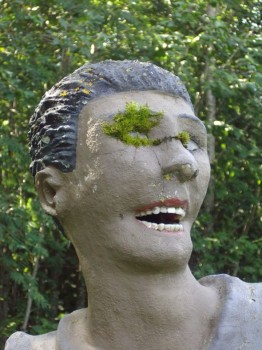
Moss lady: one of the 500 statues
Papermill worker Veijo Rönkkönen (1944–2010) lived all his life on a small, isolated farm in Parikkala, eastern Finland, close to the Russian border. In the 1960s he started sculpting statues in his free time which he placed in the garden around his house. The expanding statue park – take a look at the pictures! – was always open to visitors for free.
When the artist died, the Parikkala authorities were not willing to invest money in acquiring the garden and the park, a unique ‘total work of art’. Fortunately, it was bought by a businessman, Reino Uusitalo, founder of the Pyroll paper and cardboard company. An association now manages the park – and entry is still free. Rönkkönen’s outsider art continuously attracts nearly 30,000 visitors a year.
Over a period of fifty years, Rönkkönen created five hundred human and animal figures made of concrete. Living in his house in the middle of his garden, the artist avoided any contact with the thousands of people who came to wander in his extraordinary open-air gallery.
Now, thanks to Uusitalo’s generosity and the work of the association, the garden will keep growing – and the statues grow lichen and moss, ageing naturally.
![]()
Photographer and writer Veli Granö introduced the life and works of this self-made artist in his book Veijo Rönkkösen todellinen elämä / The real life of Veijo Rönkkönen (Maahenki, 2007): see Books from Finland‘s extract.
Egg in a Cage?
17 August 2012 | This 'n' that

Noises off: the Chapel of Silence. Photo: Mika Huisman/Decopic
A windowless wooden construction with a timber interior sits on a busy route between the bus and railway stations in the middle of Helsinki. The egg-shaped Chapel of Silence contains simple wooden benches, offering a moment of peace and quiet for anyone passing by.
Almost 12 metres high, 270 square metres in overall footprint, it is a sacral space, with a small cross and an altar at the back, but it is not intended for liturgical purposes – however, social services are available for private conversation during opening hours.
Helsinki is this year’s World Design Capital – together with the neighbouring cities of Espoo, Vantaa, and Kauniainen, and Lahti, a hundred kilometres to the north. Every second year the International Council of Societies of Industrial Design recognises one global city `for its accomplishments in utilizing design as a tool to improve social, cultural, and economic life’. More…
Two to tango
3 August 2012 | This 'n' that
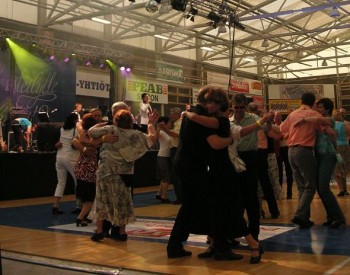
Tango: less romantic up north? Finns love it anyway. Photo: Orfeuz, Wikimedia
Picture the scene: it’s August, and the nightless days of midsummer have given way to darkening evenings. Candles are lit, and minds turn to the winter ahead.
The berries of the rowan trees are already turning bright scarlet and the purple rosebay willow herb catches the last of the sunset. From an outdoor dance floor across the meadow drift the melancholy strains of… the Finnish tango.
(The YouTube insert is from the film Tulitikkutehtaan tyttö [‘The matchbox factory girl’, 1990], by Aki Kaurismäki, featuring the actress Kati Outinen. Satumaa [‘Wonderland’ by Unto Mononen] is sung by Reijo Taipale.)
Cheesy as it is, we confess we have a liking for this most northerly cousin of the fiery Argentine original. So, it seems, does the BBC Magazine, in a recent article, Mark Bosworth goes to witness the traditional Tango Festival in Seinäjoki. Check it out. More…
Smart Moomins
27 June 2012 | This 'n' that
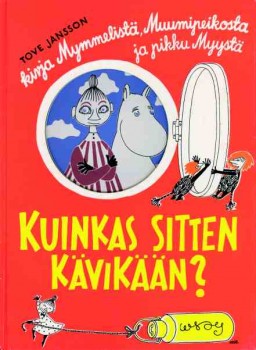
From page to screen: Tove Jansson's classic
‘Here’s little Moomintroll, none other,
Hurrying home with milk for Mother,’
are the opening lines of Tove Jansson’s classic 1952 illustrated children’s tale of a sister lost and found, The Book about Moomintroll, Mymble and Little My, in the English poet and novelist Sophie Hannah’s beguiling translation. (Swedish original: Hur gick det sen? Boken om Mymlan, Mumintrollet och Lilla My; illustration: the Finnish version.)
The book has now been released as a smartphone app by the London publisher Sort Of Books and Helsinki’s WSOY in collaboration with the Finnish developer Spinfy.
At the tap of a finger, birds fly, forest creatures crawl up and down tree-trunks, flowers open and close, fish jump and hattifatteners wiggle. Unlike in the Japanese animated cartoons that have done so much to make the Moomins well-known worldwide, this is achieved without doing any violence to Jansson’s original graphics.
The app can be played either in text or, for very small children, read-to mode, voiced by the actor Sam West. Three more Moomin apps are scheduled for release later this year.
In other words
21 June 2012 | This 'n' that
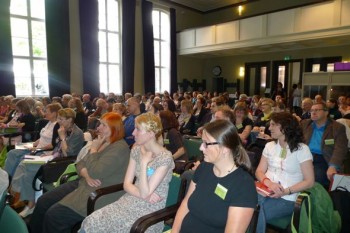
Wordworkers meet: the translators' congress in Helsinki, 11–14 June. Photo: Hannele Jyrkkä
From Finnish or Swedish into 32 languages: in mid June FILI (the Finnish Literature Exchange) held the biggest international meeting of translators of Finnish literature of all time.
The congress, entitled Kääntäjän sana/Översättarens ord (Translator’s word) was planned with one eye on the Finnish theme of the 2014 Frankfurt Book Fair.
The former Lisa Hagman School, now the House of Learning, offered the premises for workshops and lectures for 120 professional translators and almost 70 scholars of language and literature.
Participants translating from both Finnish and Finland-Swedish were offered opportunities to meet writers, listen to lectures from experts in language and literature and gain feedback from other active professional readers. More…
Tweet! Oink! Ow!
14 June 2012 | This 'n' that
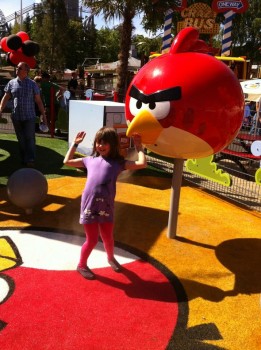
Fan fun: Angry Birds theme park, Tampere. Photo: Hildi Hawkins
For anyone who’s not a fan, it can be hard to see what has made the Finnish-born game Angry Birds the number one paid smartphone app in the world.
Catapulting wingless birds at pigs seems an unlikely route to hours of focused fun; but then, the same could seem true, prima facie, of moving a set of unrelated figures around a chequerboard according to some rather arbitrary rules. There are similarities, though – as 10-year-old Sophia said, ‘Angry Birds is a lot like chess – only more fun.’
So, when the most junior members of the Books from Finland editorial team – Max (3), Tia (6) and the above-mentioned Sophia (see their previous review here) – discovered that the world’s first officially sanctioned Angry Birds theme park was opening during their visit to Finland, it was obvious they had to be there for the occasion.
Friday 8 June was a fabulously sunny day for a trip to Tampere, Finland’s second city, and its famous Särkänniemi fun fair, on a spectacular location between two lakes. Angry Birds Land was packed with the nursery- and primary-aged children it’s intended for. More…
